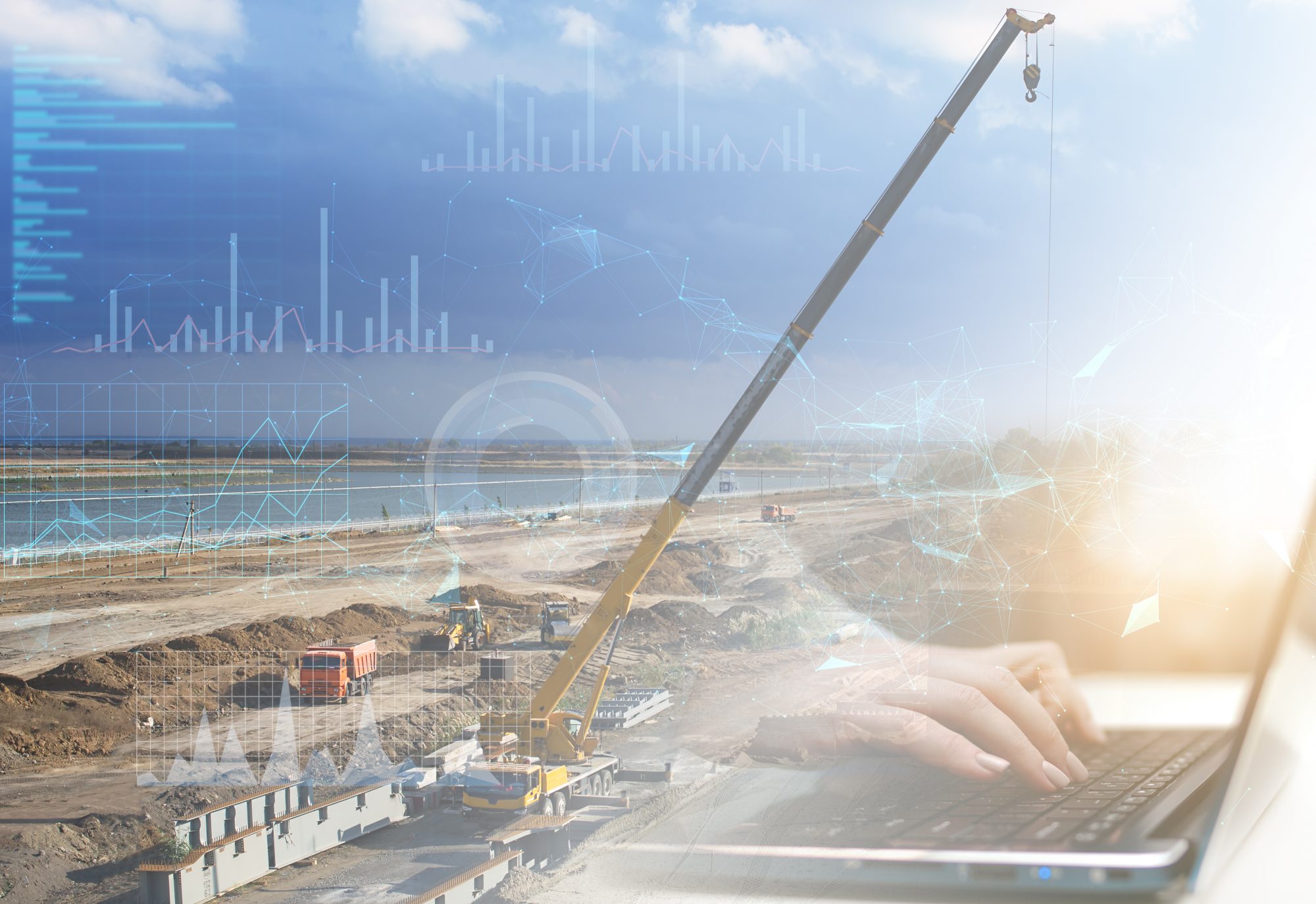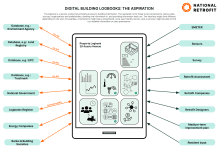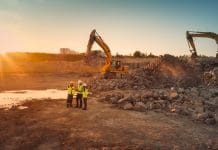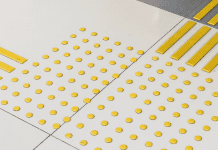The evolution of connected data environments will digitalise asset delivery and management, and enable an even higher degree of collaboration – benefiting projects and the organisations that deliver, manage, operate and own them, writes Michael Gaunt, information management project lead, Mott MacDonald
Collaboration in the construction industry has been boosted by the development of connected data environments – the successors of common data environments). Connected data environments (or CDEs) are virtual workspaces, hosted in the cloud, that enable those involved in delivering major projects to upload, store, use, update and share information.
CDEs are founded on open data, providing a ‘single source of truth’ – the one, unifying point of reference for the whole project team, with information that is never out of date. This unlocks valuable time and cost savings – no delays waiting for information and no errors arising from decisions and work based on superseded information. This reduces the level of checking needed on the journey from design to completion – reducing workload pressures and freeing time to focus on higher-value activities better suited to skilled professionals.
There is huge as-yet untapped potential in CDEs. To date, seamless connectivity remains more an aspiration than a reality across much of the industry. On major projects, we commonly see multiple platforms used by each part of the delivery team – and more recently, duplicated technologies between teams. Using the industry’s current approach, a document issued by the engineering team is typically uploaded to the contractor’s system, and in turn uploaded to the client’s system. This process can take up to a week and often requires a full-time employee with each party. The risk of human error erodes the value of project data.
Horizon 2: Setting our sights on next-generation CDEs
We use time horizons to guide and manage innovation, which helps focus our efforts on creating tangible change. Our first horizon for the development of CDEs extends one to three years from now: within that timeframe, we expect technology that is already available will become widely deployed.
Horizon 2 looks three to five years into the future when we expect to see our industry adopt best practices from other industries. Taking travel as an example, you can book flights direct from an airline’s website, via a travel agent, or from online travel platforms like Expedia. All are independent organisations, yet once the ticket is booked, every one of them has access to the information that you have booked your seat and that it can’t be offered to anybody else.
Horizon 3 looks five to 10 years ahead, when we can be sure CDEs will have developed far beyond their current capabilities, enabling huge gains in efficiency. As it is difficult to know exactly what horizon 3 will look like with much certainty – especially considering the as-yet unknown technological shifts which will disrupt our industry in this timescale – we prefer to focus on horizon 2, where we can effect positive change.
Our vision for truly connected CDEs
Our horizon 2 vision is of a data ecosystem. Under every contract, all parties will be digitally connected and share data in real-time. This will enable an integrated ‘enterprise’ approach to project delivery, in which the client and the members of their supply chain operations as a team. And horizon 2 will see organisations sharing digital objects, treating data as an asset, and using a common language while doing so – going far beyond current document sharing.
Horizon 2 will see data moving between three connected levels:
1. Data level
The foundation of our model is all the data that feeds into the CDE. This includes data streams from physical assets via sensors; shared reference data, such as that from transport networks or meteorological updates; and data from bespoke industry apps, such as our Moata suite of products, which gather and combine data for added insight. Application programming interfaces (APIs) enable these various data sources to ‘talk’ to each other, allowing interoperability and eliminating bugs caused by incompatible software.
2. Connectivity level
All these data sources feed into the CDE, which is founded on the following characteristics:
- Connected ecosystem: Under horizon 2 the CDE is a web of communication systems, giving all members of the project delivery team immediate access to the latest data, regardless of location.
- Decision capture: The CDE will store decisions made and the outcomes they generate, making organisations and individuals more accountable for their actions. This information will inform and improve subsequent decision-making.
- Open data formats and common coding: Talking a common language so we can communicate between systems is possible using our industry’s open standards. Avoiding the need for translation between platforms, hardware, tools and applications improves efficiency, accuracy and uniformity across the CDE. This also applies to naming approaches. Widescale adoption of these standards is a key enabler of the horizon 2 CDE. Settling on a common approach that unifies all sectors and service providers is one of the core challenges to realising our vision for horizon 2.
- Data- and object-based: Our industry mainly shares information in file formats, but is starting to share individual BIM objects and engineering data. Horizon 2 will see object sharing and approval becoming commonplace, leading to greater accuracy and efficiency.
- Common process and organisation models: Until now, digitalisation has been piecemeal. The horizon 2 CDE better defines the structure of teams, maps the flow of information, and provides shared processes for data management. The CDE will work in the same way for all members of the team, reducing the time required for training and minimising risk of human error.
3. User experience
People should have the same level of accessibility they get in other areas of their daily lives, for example on their phones. They no longer expect to wait 10 minutes or more for system updates to load. Nor do they expect to deal with clunky user interfaces when they are used to engaging, user-centric portals when they use Spotify or Netflix. Horizon 2 CDEs will provide effortless interaction, using familiar, user-friendly technologies. With digitalisation now impacting many more aspects of our work, having an accessible user interface is a core requirement of the next generation of CDEs. And it’s not just a matter of preference or ‘looking good’; a great user experience supports better decision making and therefore better outcomes.
Optimise asset management through connected data environments
Next-generation CDEs will bring extensive benefits: stronger collaboration, better-informed decisions, fewer errors, and improved outcomes for clients and end users. Data will be available for reuse on similar projects, streamlining design, delivery, integration, operation and maintenance.
Across the industry, the current practice is to archive CDEs at the end of a contract. The horizon 2 ambition is to hand on project information for reuse – a complete record of the processes, decisions and work done by all parties during design and construction. For clients, this information will support whole-life asset management and future investment.
Time to widen discussion and ramp up action around CDEs
We have a clear vision for what the next generation of CDEs will look like and are using pilot projects to advance towards horizon 2. Our digital leaders will manage and share learnings so that the innovations can become business as usual.
We can already see the industry moving in the right direction, with the development of open standards, standardised information requirements and alliance-based approaches to information management. Getting to the next stage requires a deliberate, industry-wide push to create better-connected systems.
If together we do it, it will be good for our industry and society – better value, higher quality, higher performing projects. Reaching horizon 2 and going beyond is fundamental to delivering better outcomes for clients, society and the environment.

















